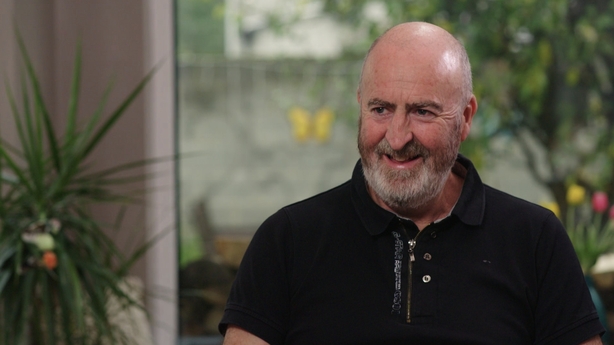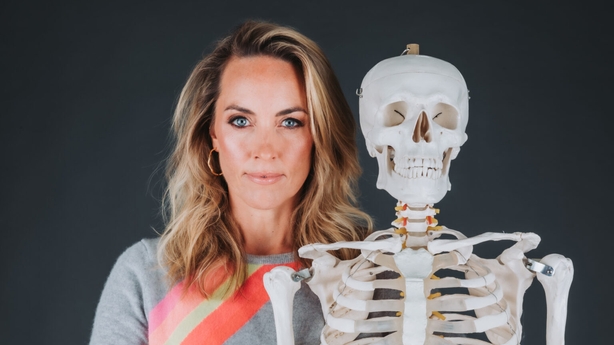Have you ever wondered what really happens when someone goes under the knife? Presented by Kathryn Thomas, My BodyFix, takes a look at six surgeries with the support of virtual reality.
In tonight's episode, Kathryn meets Dubliner Phil Redmond - a mechanic from Tallaght whose active life came to a standstill when he was hit with unexplained abdominal pain at the age of 61.
Following some tests, Phil was diagnosed with a considerably large kidney stone. While small kidney stones are not uncommon, occurring in about 10% of the population worldwide, larger kidney stones are a different beast.
"They say it's like giving birth for a man," says Phil. "Now, I’ve never had a baby, but I can tell you it felt like I’d gone 12 rounds with Mike Tyson and he was delivering all low blows."

Over the previous few months, the stone in Phil’s kidney had grown from 7mm to 27mm. This is where Professor Rustom Manecksha at Tallaght University hospital came in.
Rustom planned a series of surgeries to tackle the stubborn stone, which was growing in a critical part of Phil's kidney, causing pain and infection. In the programme, we meet this monster kidney stone, up close and personal, in a 3D virtual reality scan.
"AI, in its various forms, is being applied to healthcare in a range of ways," Rustom told RTÉ Lifestyle. "One such example is machine learning – where computer programmes use algorithms and pattern recognition to execute certain tasks e.g. medical imaging (x-rays and other scans), retinal imaging for diabetic patients, etc.
"3D imaging, such as what features on My BodyFix, can be hugely beneficial not only to the surgeon [or] surgical team but also to the patient. Benefits to the surgeon include having a more detailed view of complex anatomy, allowing better preparation and precision, especially as the area of interest can be viewed from multiple angles and aspects.
"In certain instances, it can be incorporated into simulation programmes, with the potential for a surgical 'practice run' in advance of the actual surgery."

As well as helping the surgical team, Rustom believes the 3D images can help to calm patients' nerves.
"Having a greater understanding of their condition and about what the surgery involves empowers patients to make informed choices and is an effective tool to enhance the patients' experience, focusing on a patient-centred, collaborative approach to their care.
"Patients increasingly want to be included in their healthcare decisions and having tools like 3D imaging with augmented reality go a long way toward patient understanding, which in turn puts them at ease."
According to Rustom, Phil's stone was "large and complex in shape", so projections in multiple directions was particularly helpful.
"3D with AR is really helpful here as conventional scan images don’t convey the three-dimensional kidney and the stone with projections growing in multiple directions."
To tackle the obstruction and to treat the infection, the surgical team passed a thin tube through the flank directly into his kidney, so that infected urine had a way of getting out.

Stage two, the first surgery, dealt with the bulk of the stone including the parts causing the obstruction.
"I performed this surgically by a puncture into Phil’s kidney made through his flank that was then dilated sufficiently to allow telescope instruments into the kidney, to locate the stone and additional instruments that go through the scope to disintegrate the stone and to evacuate the fragments."
Stage three focused on the remaining stone that was not accessible during Phil’s first surgery due to the different direction it had grown.
"This is the surgery that was filmed, where I got into Phil’s kidney in a different way to his first surgery. This time, I passed a very fine, flexible telescope through his water passage, bladder and up his ureter (kidney tube), and entered his kidney, using the natural openings. Therefore, avoiding making any punctures into his kidney and hence, significantly reducing his bleeding risk."
Using a laser, the remaining stone fragments were disintegrated into a very fine dust that then washed out of the kidney with the urine.
Although the surgery was a success, Phil's recovery time meant that he missed the wedding of his daughter, Philomena.
Determined that he would see her in her wedding dress, Philomena surprised her Dad by turning up at the hospital. In her white dress and his hospital gown, father and daughter had a very sweet dance.
Their corridor spin was recorded by staff and patients on social media and soon went viral on TikTok - watch it above.
My BodyFix airs Tuesdays at 20.30 on RTÉ One and RTÉ Player.

